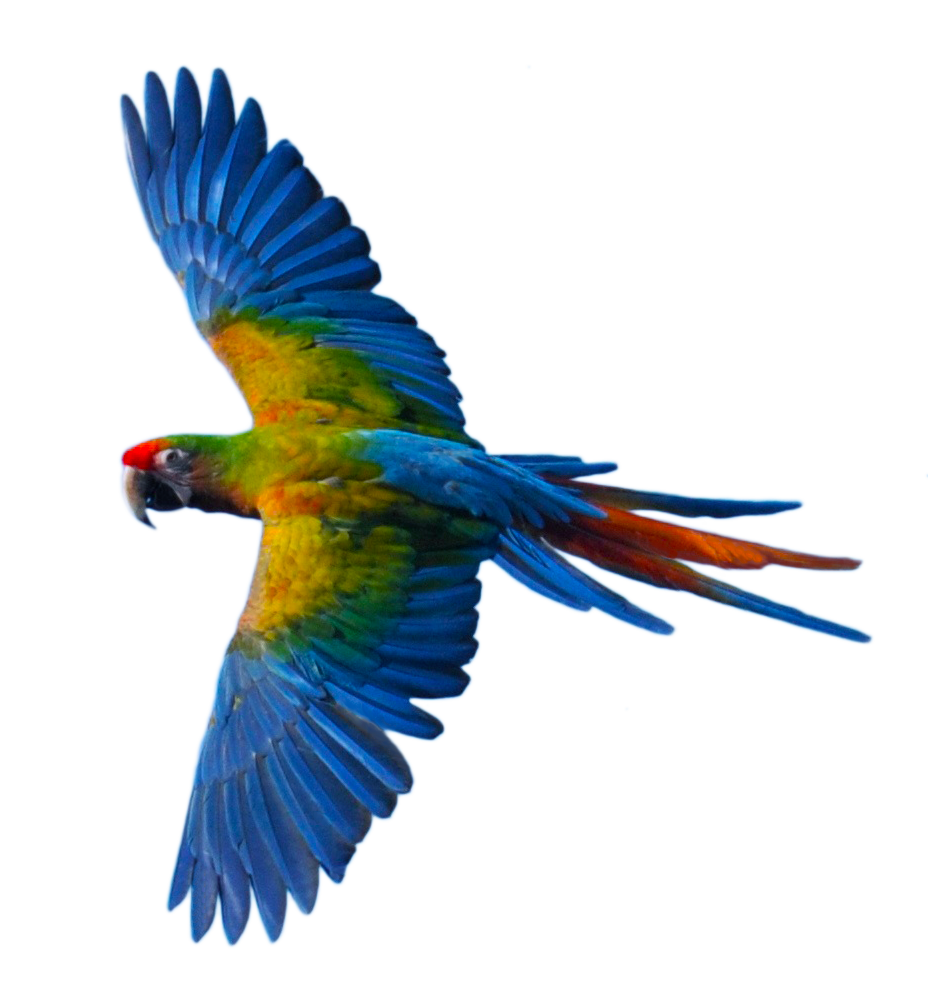
Target Training
Written By Chris Biro, Copyright 2008
See short video of target training.
The term “targeting” most commonly refers to training an animal to touch an object or location. It may require the animal to travel to the object or location, and the trainer may specify which part of the animal touches the object.
A target stick can be used to lure an animal to a location, such as in or out of a cage or carrier or to a particular perch. I use targeting as part of my initial recall training for flighted birds.
Targeting is a simple behavior that has great value as a training aid and training tool. The animal is either doing the behavior or it is not, so it is clear to both trainer and animal when the correct behavior occurs and that helps the animal link the reinforcement to their behavior. Thus it is very useful in helping an animal learn about the rules of learning (if I do something he wants, then I get a goody.)
I am an advocate of using a clicker for training because it clearly identifies the precise moment the desired behavior happens. I use a clicker to train targeting.
Targeting is a great first behavior to train because the simple behavior of touching a target helps teach the animal the connection between its behavior and how it can do this specific behavior to get a treat. When combined with clicker training, targeting helps the animal more quickly come to understand the meaning of the clicker.
There are several reasons training an animal to target is useful. Among them are:
1) Targeting is a useful behavior once learned because it allows you to move the animal to different locations without having to handle it or force it in any way.
2) It is a good behavior to use to help teach the animal what the clicker means
3) Targeting is a great way to teach the bird the ’cause and effect’ concept. Giving the bird the ability to feel in control of some of its life is important for its mental health. The bird learns it can influence you to give it treats through selecting its behavior. This is sometimes referred to as “operating on its environment”. Targeting is a good behavior to show the animal that it can have some influence on its environment because the behavior is yes or no, without grey areas to be confusing.
4) As your training progresses into more complex behaviors, targeting can be a good behavior to teach the concepts involved in establishing stimulus control.
To train targeting you need a target, an animal, and a treat. The first target I use is a stick, a ‘target stick’. It has no other function except being my target stick. My animals all know that when that stick comes out, we are about to do some training. They never confuse it with a perch, a pencil or some other functional device. They do not have access to it unless we are training. I use either a chop stick or a one foot long piece of 1/2 PVC pipe with an end cap on each end. One end cap is painted blue and the other red. These can later be used for training the birds to distinguish between different colors.
To start, I put the bird on a T perch. I hold the target stick up to the bird and note the bird’s reaction. If it recoils in fear, then I “shorten” the target stick by hiding most of it behind my hand/arm. By offering the target stick with most of the length hidden I can offer what appears to the bird to be just the end or the end and a few inches of the target stick. In most cases the bird will touch the target stick without much effort. Initially it does not matter WHY the bird touches/bites the stick (fear, aggression, curiosity, defensive attacks, etc.), it only matters that it does. Again, what matters is that contact with the stick is made.
Most often the animal will reach out to the target stick due to curiosity or defensiveness. In either case it may bite the stick or just touch it briefly. Click and treat at the moment of contact.
Initially I may resort to putting the stick into the face of the bird so it has little choice but to touch the stick. Usually after only two or three reps like this the bird will become more interested in touching the stick on its own, probably because it is starting to make the connection that there is a good thing that happens after touching this stick.
When the bird touches the target stick, I click my clicker at exactly the moment the bird makes contact and I immediately offer the bird a desired treat. I use peanuts or sunflower seeds the most but occasionally use french fries, potato chips, or anything else I happen to have that the bird seems to desire.
Your timing is important especially if this is the first behavior the bird is learning. By clicking the clicker at exactly the moment the bird makes contact with the target stick the bird learns that touching the stick earned it the goody. Imprecise timing will make that association more difficult to make. So, practice clicking your clicker by bouncing a ball and clicking at the moment the ball hits the floor, or have a friend touch something while you try to click at the exact moment they touch it. Your friend can tell you whether you clicked at the exact moment. Try video recording your clicking the moment the ball hits the floor then review the video to see how well you are doing.
As with all behaviors, the trick is getting the first repetition to happen so you have something to reinforce. It is our goal for the animal to initiate touching the stick, to initiate the action that causes the physical contact to occur. I may sometimes initiate the touching of the stick to the birds beak myself if the bird seems to believe they must bite the stick and I am ready for them to learn to simply touch, not bite the stick. This demonstrates that touching and not biting works to get a click. If the bird is very fearful of the stick you can start clicking for the bird simply looking at the target stick. Then click for its head turning in the direction of the target stick. This will usually lead to the bird becoming curious enough to reach out and touch it. You immediately click and treat.
After each such repetition I give them the choice to touch it on their own to see if we are making progress. If not I repeat and then give them the choice again.
Once the bird is touching the stick when it is right in front of its face, I then change the criteria so that the stick is now positioned off to the side of the bird’s face. The bird then must turn its head to reach over and make contact with the target stick. This is a simple test to see if the bird does in fact understand what is going on. Once the bird will turn its head to touch the target stick we again change the criteria so that the bird must take a step to touch it. Next I work on getting them to walk from one end of the perch to the other to come touch the target stick. I might also work on turning 90 or 180 degrees to touch the target. Then turn 270, then 360 degrees. At this point they are usually starting to “get it” and the progress goes quickly. Then I work on them walking across a table or cage top to reach the target stick. This is a form of “luring” the bird with the target stick since the bird is now moving to the location the target stick is held. The practical application of this is that you can now move the bird from place to place without having to handle it. You can now use the target stick to move the bird in or out of its cage or carrier or to different areas of its cage while feeding or cage cleaning. If your bird bites or is frightened of stepping on your hand, this is useful.
After teaching targeting to help generalize the learning process I use my clicker to mark and reinforce other simple behaviors the bird already knows, like step up, step down, etc. This helps the bird generalize the click/treat relationship and how the click marks the behavior that earned the bird the goody. From this I can move on to clicking the bird for letting me touch it on its head or back and eventually putting its head down to be touched. Targeting is a great first step toward such goals.
Click here to see a short video of target training.
There are no in-betweens, no gray areas.
Parrots: more than pets, friends for life.Chris Biro

Quick question…
Do you hide the treat or let him see it?
If you let him see it and catch his attention with it is it a good idea to later on start hiding it from him?
After he gets the target training down pat, I plan on working on colours.
What might I teach him next?